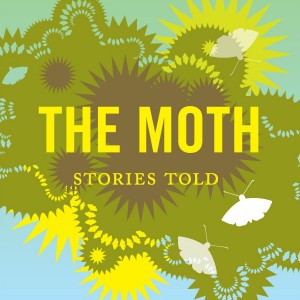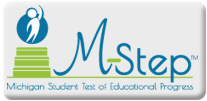In my first post on the power of podcasts, I talked about their place in the ELA classroom. Not only do they meet important standards, but they develop crucial listening skills. And I talked at some length about Serial, a must listen to podcast. So if you’re sold on bringing this medium into your classroom, what podcast do you choose and how do you effectively integrate it effectively from a curricular and skill standpoint? Below are some ideas for how to think about choosing a podcast to work with what you’re already teaching.
Combine Nonfiction Podcasts with Narrative Reading to Study Theme
 This American Life episodes are ideal to couple with fiction, especially if you’re focused on theme. The show is structured around a single theme each week. So it’s quite easy to scroll through the archives and find a theme you might be looking for, especially because of the nice thumbnail descriptions TAL provides. For example:
This American Life episodes are ideal to couple with fiction, especially if you’re focused on theme. The show is structured around a single theme each week. So it’s quite easy to scroll through the archives and find a theme you might be looking for, especially because of the nice thumbnail descriptions TAL provides. For example:
Most of us go from day to day just coasting on the status quo. If it ain’t broke, why fix it, right? But when routines just get too mundane or systems stop making sense, sometimes you just have to hold your breath…and jump. This week, stories of people who leap from their lives, their comfort zones…even through time.
from Episode 539: The Leap, This American Life
This episode pairs well with texts about risk-taking, the consequences of risk-taking, a desire to leave reality, and escape. I can imagine having students listen to it in conjunction with Into the Wild, “The Secret Life of Walter Mitty,” Tennessee Williams’ The Glass Menagerie and even Romeo & Juliet.
Or perhaps you’re doing a character study on the morality of characters in a text like Hamlet, Atonement by Ian McEwan, or To Kill a Mockingbird. Students could list to segments of TAL‘s episode called “Good Guys” and compare these real life stories to the choices made by characters in the fiction text they’re reading.
Lots of men think of themselves as “good guys.” But what does it actually take to be one? To be a truly good guy. Stories of valiant men attempting to do good in challenging circumstances: in war zones, department stores, public buses, and at the bottom of a cave 900 feet underground.
from Episode 515: Good Guys, This American Life
The other beautiful thing is that each episode of This American Life is divided into smaller acts. So you can select one act to have students listen to or several acts. Regardless of how many acts they listen to, when pairing narrative texts and podcasts, you’re having students read across texts, a key Common Core Standard:
Reading Anchor Standard 9: Analyze how two or more texts address similar themes or topics in order to build knowledge or to compare the approaches the authors take.
Use Podcasts as Texts for Argument Analysis
 When you use podcasts in this way in your classroom, students identify and analyze the implicit and explicit arguments being made in each “act” of a TAL podcast or other podcast, comparing the arguments within an episode. They can then respond with their own written or recorded narrative argument about the topic. This American Life episodes provide listeners with a series of narrative arguments around a single theme.
When you use podcasts in this way in your classroom, students identify and analyze the implicit and explicit arguments being made in each “act” of a TAL podcast or other podcast, comparing the arguments within an episode. They can then respond with their own written or recorded narrative argument about the topic. This American Life episodes provide listeners with a series of narrative arguments around a single theme.
What do I mean by narrative argument? Each act delivers a compelling story, and that story and the producer’s reflection on the events in the story, create an argument. The creation of an implicit argument via narrative and reflection is incredibly difficult to do, as students discover when they try to write a personal essay. But that difficulty is all the more reason to listen to TAL episodes and to even have your students create mini-podcasts, which I’ll talk about in my next post.
Suggested Podcasts:
- Is This Thing Working?, This American Life – Stories of schools struggling with what to do with misbehaving kids. There’s no general agreement about what teachers should do to discipline kids. And there’s evidence that some of the most popular punishments actually may harm kids. (tags: school, discipline, inequality, education system)
- “Partners in Struggle” by Grace Lee Boggs, The Moth – This Detroit native and nationally known activist is inspired to begin activist work in the 1940s and meets her future husband. (tags: Detroit, activism, love, diversity)
- “Who Put the ‘Pistol’ in ‘Epistolary’?” from “My Pen Pal,” This American Life – The story of a ten-year-old girl from small town Michigan named Sarah York, and how she became pen pals with a man who was considered an enemy of the United States, a dictator, a drug trafficker, and a murderer: Manuel Noriega. (tags: unlikely friends, propaganda, international relations, Michigan)
- “Prom,” by Hasan Minhaj The Moth – A high schooler encounters racism when he tries to go to prom. (tags: teenage experience, racism, cultural diversity, big events)
- “Scene from a Mall” – This American Life spends several days in a mall in suburban Tennessee, to document life in the mall during the run-up to Christmas. Also, a rift in a national association of professional Santas—the Amalgamated Order of Real Bearded Santas (yes, there is such a group). (tags: holidays, working teenagers, suburbia, place/environment, subcultures, competition)
- “Allure of the Mean Friend, “ This American Life – What is it about them, our mean friends? They treat us badly, they don’t call us back, they cancel plans at the last minute, and yet we come back for more. Popular bullies exist in business, politics, everywhere. How do they stay so popular? (tags: friendship, teenage life, contradictions, bullying)
Developing Close Listening Skills
So you’ve decided what podcast to use and how it works with your curriculum. But how do you scaffold and support good listening skills?
 Multi-draft Listening
Multi-draft Listening
Just as we ask students to read a text more than once, they’ll need to listen to a podcast more than once. I suggest taking an approach similar to the one you’d use with close reading:
First Listen – Listen to the podcast all the way through to make sense of the story and get the gist. Pause occasionally to have students jot down names of people, questions that come up and big ideas that are explicitly or implicitly stated.
Second Listen – With your students, develop a listening agenda. What questions do you/they want answered? What’s the main idea of the episode? What aspects of the episodes structure contribute to their understanding? Chunk the listening by stopping every 5-10 minutes to allow students to jot notes and add to their graphic organizers (see the next section).
Third Listen – This very focused listen allows the class, small groups, or individuals to return to specific points in the podcast to re-listen for deeper analysis in order to confirm or test initial theories they developed based on their early listening.
Student-created Graphic Organizers
Because students can’t annotate this audio text in the same way they can annotate a hard copy or even digital text, graphic organizers become really important. Podcasts require a bit more work on the part of the student when it comes to annotation. Below are some ideas for types of graphic organizers to help students structure their thinking:
- Timeline of Key Moments/Events – A chronological list of key moments in the story that will help them later develop ideas about the episode’s structure.
- Structure Picture – Students draw a picture of how they perceive the structure of an episode. This might follow the more traditional text structure graphics we’re accustomed to or might be more of a mind mind.
- People Map – As they listen, have students develop a map of characters and how they’re related — like this one on the Serial website.
- Evidence Chart – Have students create a T chart. For Serial, the two columns would be titled “innocent” and “guilty.” As they (re)listen, they will record which evidence makes Adnan seem guilty and which evidence makes him appear innocent. For another podcast, students might be gathering evidence regarding another question. The columns might be labeled “pro” and “con” or “agree” and “disagree.”
- Question Web – What questions remain unanswered? Students create a web of both factual and analytical questions, connecting those that relate to and generate other questions.
Have ideas to share about good podcasts for student listening and how to use them in the classroom? Please share in the comment section. In my final blog post on podcasting, I’ll provide some ways of thinking about having students produce their own podcasts, and possible pitfalls in the process.
 Delia DeCourcy joined Oakland Schools in 2013 after a stint as an independent education consultant in North Carolina where her focus was on ed tech integration and literacy instruction. During that time, she was also a lead writer for the Common Core-aligned ELA writing units. Prior to that, she was a writing instructor at the University of Michigan where she taught first-year, new media, and creative writing and was awarded the Moscow Prize for Excellence in Teaching Composition. In her role as secondary literacy consultant, Delia brings all her writing, curriculum design, administration, and teaching skills to bear, supporting districts in their implementation of the Common Core via onsite workshops and consultations, as well as workshops at Oakland Schools. She is currently spearheading the development of literacy-focused online professional learning modules as well as the building of a virtual portal where Michigan educators can learn and collaborate.
Delia DeCourcy joined Oakland Schools in 2013 after a stint as an independent education consultant in North Carolina where her focus was on ed tech integration and literacy instruction. During that time, she was also a lead writer for the Common Core-aligned ELA writing units. Prior to that, she was a writing instructor at the University of Michigan where she taught first-year, new media, and creative writing and was awarded the Moscow Prize for Excellence in Teaching Composition. In her role as secondary literacy consultant, Delia brings all her writing, curriculum design, administration, and teaching skills to bear, supporting districts in their implementation of the Common Core via onsite workshops and consultations, as well as workshops at Oakland Schools. She is currently spearheading the development of literacy-focused online professional learning modules as well as the building of a virtual portal where Michigan educators can learn and collaborate.


 Jianna Taylor (@JiannaTaylor) is an ELA and Title 1 teacher at Orchard Lake Middle School in West Bloomfield. She is a member of the AVID Site Team and Continuous School Improvement Team at her school, among other things. She is also a MiELA Network Summer Institute facilitator and member of the OWP Core Leadership Team. Jianna earned her bachelor’s degree from Oakland University and her master’s degree from the University of Michigan. She also writes reviews of children’s books and young adult novels for the magazine Library Media Connection.
Jianna Taylor (@JiannaTaylor) is an ELA and Title 1 teacher at Orchard Lake Middle School in West Bloomfield. She is a member of the AVID Site Team and Continuous School Improvement Team at her school, among other things. She is also a MiELA Network Summer Institute facilitator and member of the OWP Core Leadership Team. Jianna earned her bachelor’s degree from Oakland University and her master’s degree from the University of Michigan. She also writes reviews of children’s books and young adult novels for the magazine Library Media Connection.
 REGISTER –
REGISTER –  Description:
Description: All sessions are 1:00pm – 4:15 pm
All sessions are 1:00pm – 4:15 pm This American Life
This American Life When you use podcasts in this way in your classroom, students identify and analyze the implicit and explicit arguments being made in each “act” of a TAL podcast or other podcast, comparing the arguments within an episode. They can then respond with their own written or recorded narrative argument about the topic. This American Life episodes provide listeners with a series of narrative arguments around a single theme.
When you use podcasts in this way in your classroom, students identify and analyze the implicit and explicit arguments being made in each “act” of a TAL podcast or other podcast, comparing the arguments within an episode. They can then respond with their own written or recorded narrative argument about the topic. This American Life episodes provide listeners with a series of narrative arguments around a single theme. Multi-draft Listening
Multi-draft Listening Delia DeCourcy joined Oakland Schools in 2013 after a stint as an independent education consultant in North Carolina where her focus was on ed tech integration and literacy instruction. During that time, she was also a lead writer for the
Delia DeCourcy joined Oakland Schools in 2013 after a stint as an independent education consultant in North Carolina where her focus was on ed tech integration and literacy instruction. During that time, she was also a lead writer for the  During the twelve hour drive from Michigan to North Carolina and back over the holidays, I listened to a lot of podcasts. I admit it: I’m a podcast addict. Any time I have to drive for an hour or longer, I listen to a podcast–
During the twelve hour drive from Michigan to North Carolina and back over the holidays, I listened to a lot of podcasts. I admit it: I’m a podcast addict. Any time I have to drive for an hour or longer, I listen to a podcast– I remember talking to a colleague a few years ago who proclaimed that podcasting was not new media. She said it was just recorded radio and that podcasting was over. But podcasting is so not over and it’s a lot more than recorded radio. Sometimes podcasts never appear first on the radio at all. So why is this an important and popular media form?
I remember talking to a colleague a few years ago who proclaimed that podcasting was not new media. She said it was just recorded radio and that podcasting was over. But podcasting is so not over and it’s a lot more than recorded radio. Sometimes podcasts never appear first on the radio at all. So why is this an important and popular media form? In October, I was over the moon when
In October, I was over the moon when  It’s great storytelling and relevant to your students. The cast of characters is almost entirely high school students (or they were at the time of the murder) living through the things your students experience–juggling school and extracurriculars, navigating cultural differences between home life and school life, experiencing young love, making their way through the simmering stew of high school social life. This will seriously engage your students.
It’s great storytelling and relevant to your students. The cast of characters is almost entirely high school students (or they were at the time of the murder) living through the things your students experience–juggling school and extracurriculars, navigating cultural differences between home life and school life, experiencing young love, making their way through the simmering stew of high school social life. This will seriously engage your students.